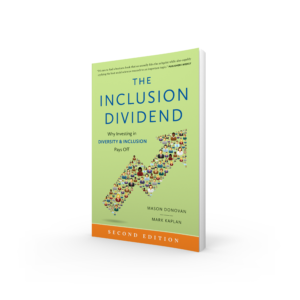 While preparing to lead a client on creating a global diversity and inclusion communications strategy, I was researching all of their and their competition’s public facing materials. My attention was squarely on their message. What are they trying to communicate? Does it make sense? Is it differentiating? Does it resonate with the target audience?
While preparing to lead a client on creating a global diversity and inclusion communications strategy, I was researching all of their and their competition’s public facing materials. My attention was squarely on their message. What are they trying to communicate? Does it make sense? Is it differentiating? Does it resonate with the target audience?
After hours of reading, I needed a mental break. I leaned back and looked around at all of the pamphlets, brochures and marketing material circling my chair. “Some nice looking people they got working there,” was a thought that quickly fleeted across my tired mind. Then it occurred to me like the second showing of the “The Invisible Gorilla” video. If you haven’t seen this video, here is the link. It is all about our selective attention and our common ability to have blind spots.
So the gorilla was walking right across these marketing pages waving his hands about and we are not seeing it. The attention when crafting the public photos was centered on having a good mix of ethnicities, race and gender. It is material on diversity and inclusion, so this approach makes sense to the marketing campaign creator as well as almost everyone that sees it. So what is wrong with that? Nothing is wrong with it except does not reflect the full reality.
For example, when was the last time you saw a photo of a pregnant woman in any of your company campaign material? Why not? Do women not get pregnant at your organization? Even companies which pride themselves on being recognized by Working Mom as a top employer, do not have photos of expecting mothers in their material.
Okay, what about people who are plus sized or not 6 feet tall or really do not look like they walked off a fashion runway? What does the exclusion of these people unconsciously say to the viewer? What do you think would be the reception if your corporate stock photos more accurately reflected real life people? How would this impact the feeling of inclusion?
Malcolm Gladwell speaks to the fact that although less than 15% of American males are 6ft or taller, fully 60% of Fortune 500 CEOs are 6ft or taller. Do tall people disproportionately make better leaders? One does not have to go out on a limb to say height has no correlation to your leadership ability. On the same note, do people who look like magazine models make better employees? If not, then why do they dominate our people marketing images? Review your material. Does it look like models need only apply?


Recent Comments